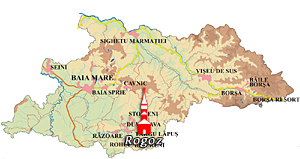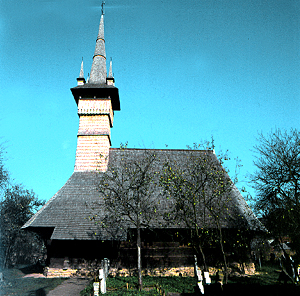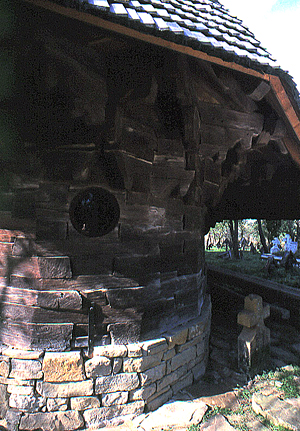Rogoz Church

Year built: 1663
Location: Rogoz
Summary: The church is famous for its intricate “horse head” consoles that support the roof, and for the woodcarvings on the façades. There is a twisted rope motif that goes around the church, with a circle forming a cross on the façades.

In 1883 it was transferred to Rogoz, to the site of an already existing church, St. Parasceva, built in 1701. On the lintel of the entrance door there is an inscription that refers to the time it was built: “of the period when Transylvania was occupied”.
The church is not the usual rectangle as its western end is polygonal. The chancel is much narrower than the main body of the church, and it is also polygonal. The entrance door is on the south façade. The roof is wide and asymmetrical.
The doorframe is decorated with a twisted rope and its shape is an elegant pointed ogee arch. At the base of the doorframe are incised rosettes.

A single-eaved wide roof covers the whole structure of the church, also the chancel. The tower roof is tall and conical, and there are four miniature pinnacles at the corners of the tower, as is usual for Lăpuş. On the tower, there is a band that is made with overlapping layers of shingles, and on the conical roof itself, there are two of these decorative bands.
The twisted rope decoration is also found inside, on the beam that marks the springing of the vault, as well as on the main beam, where it is combined with circles. The western end of the main beam is decorated by an aurochs head with a star on the forehead and incisions on the neck. The horizontal beams that support the roof are decorated with notches and incisions. The iconostasis, a painted wooden chest used as a prothesis for storing the religious objects, and a wooden chandelier with carved bird-shaped ornaments, add to the interior decorations of the church.
The mural paintings are only partly preserved. Two local painters, Radu Munteanu and Nicolae Man, made them in 1785, as documented in an inscription. Another such mural writing mentions “the terrifying year 1717 of the time of the Tatars”.



